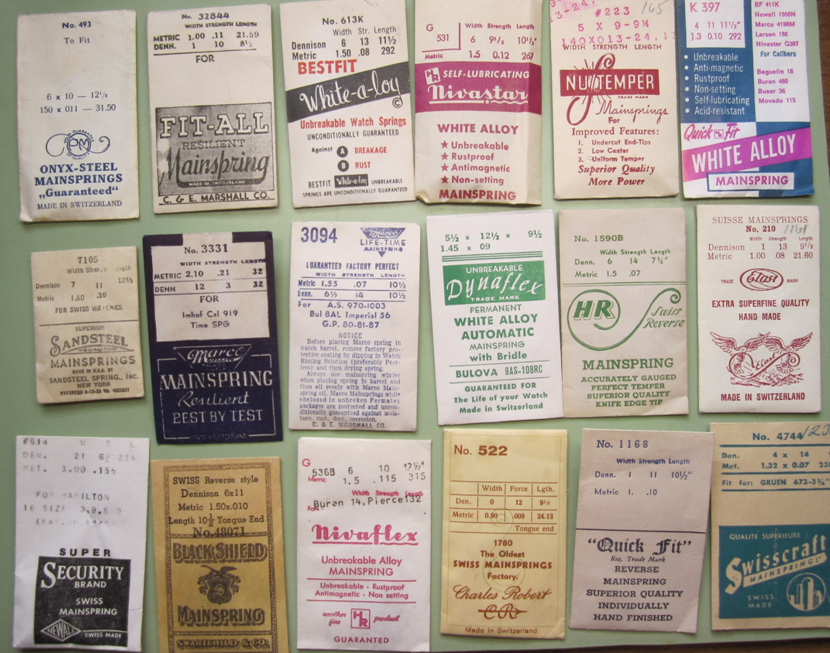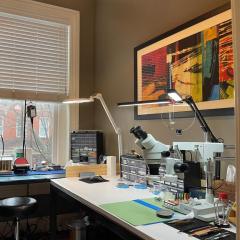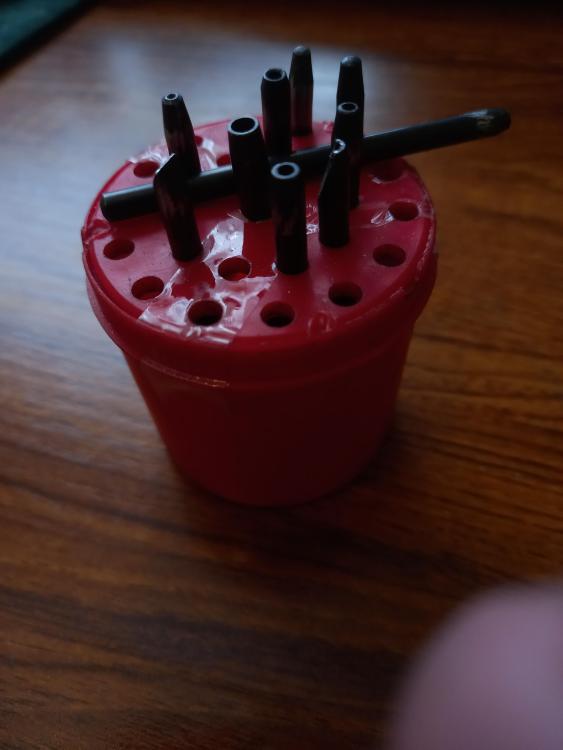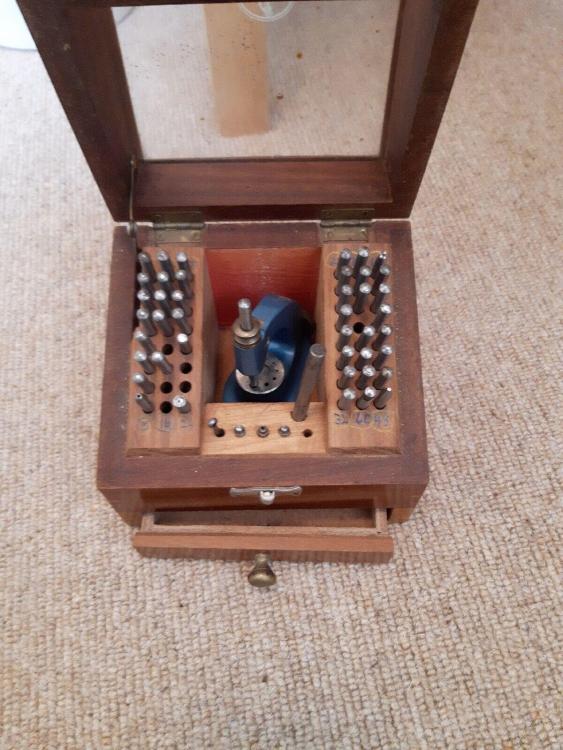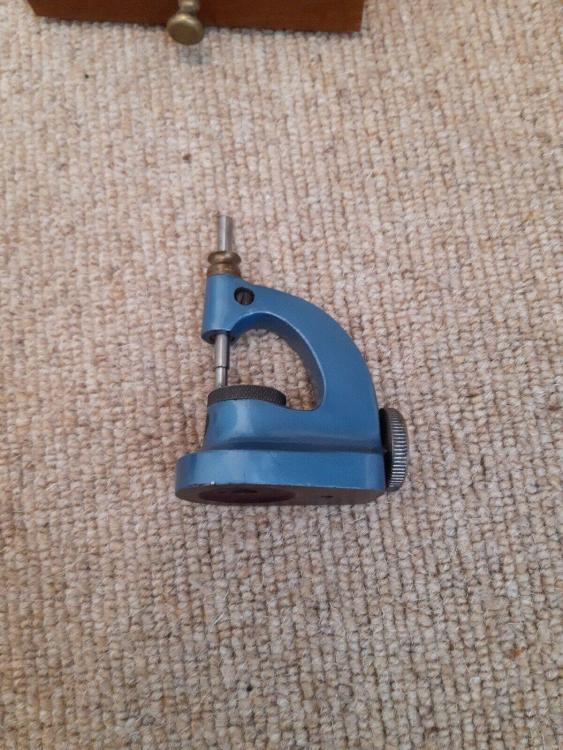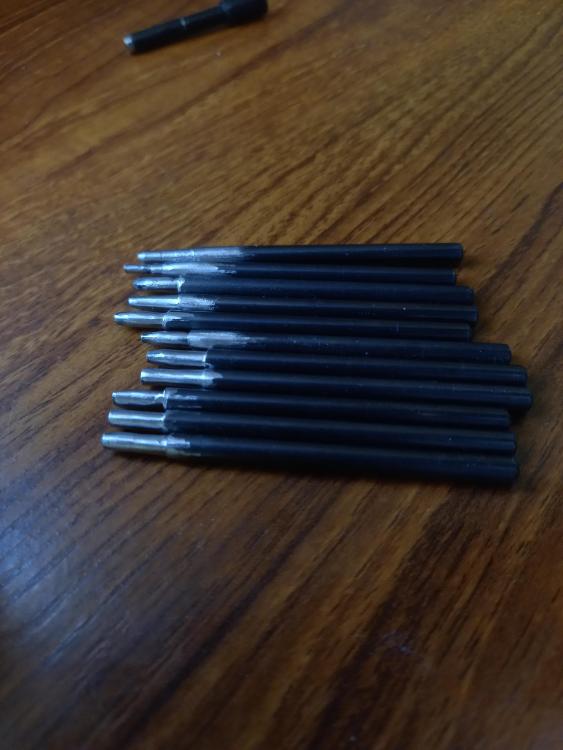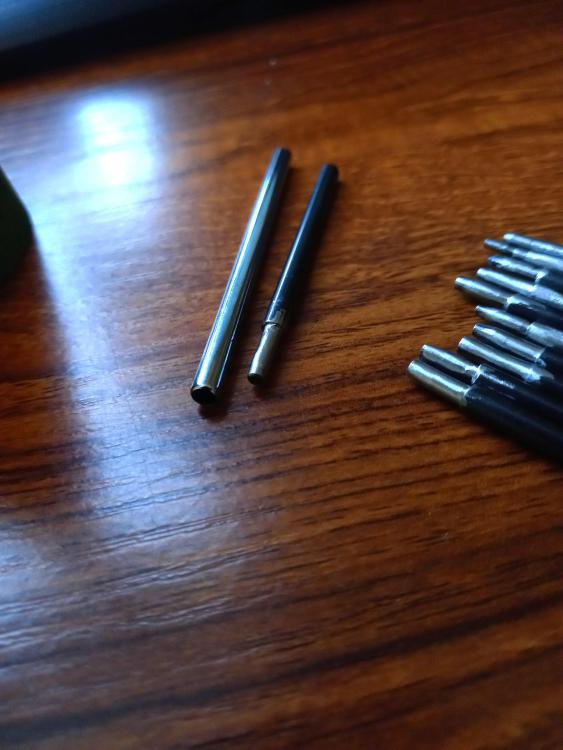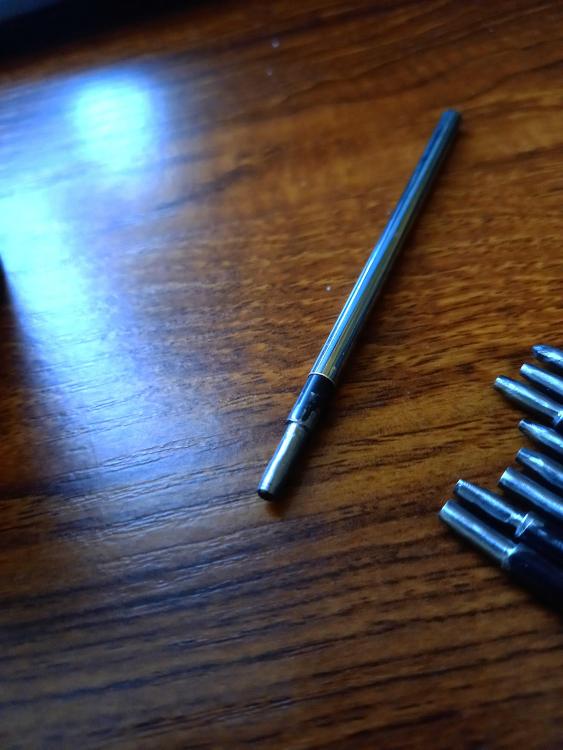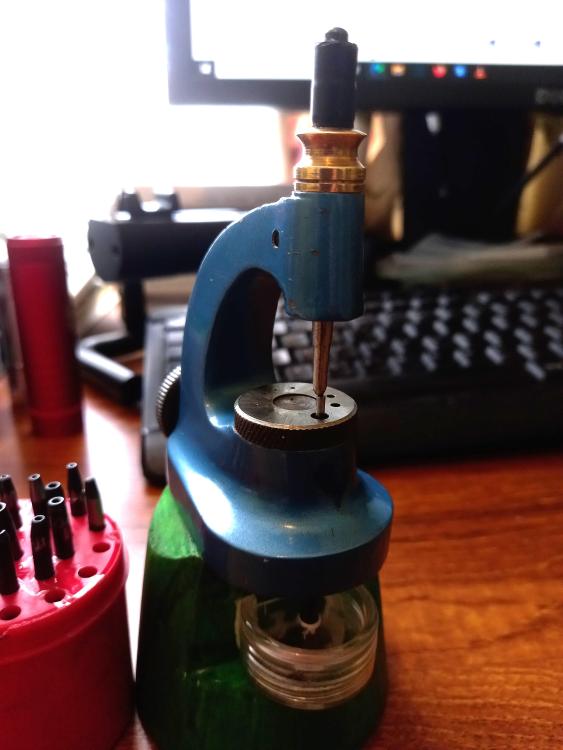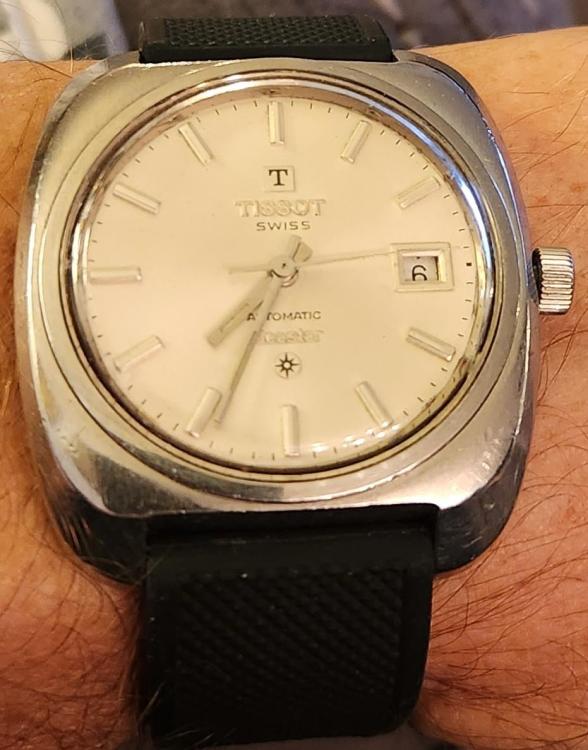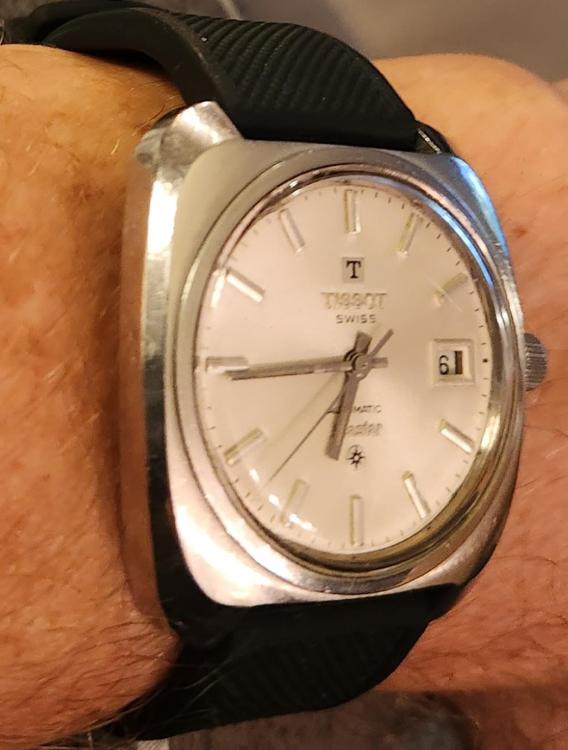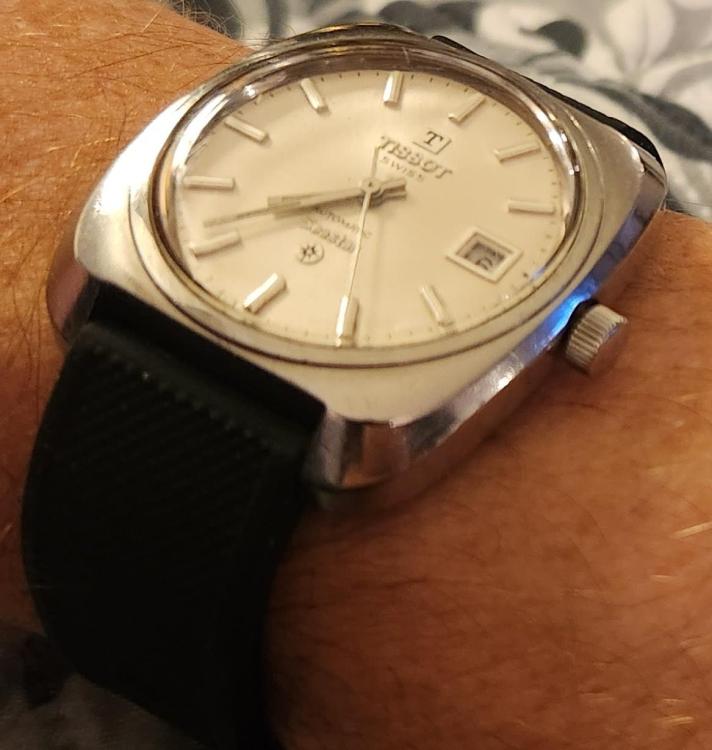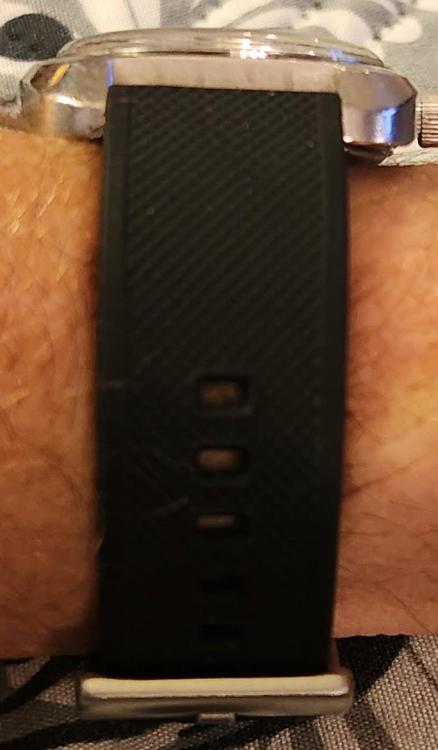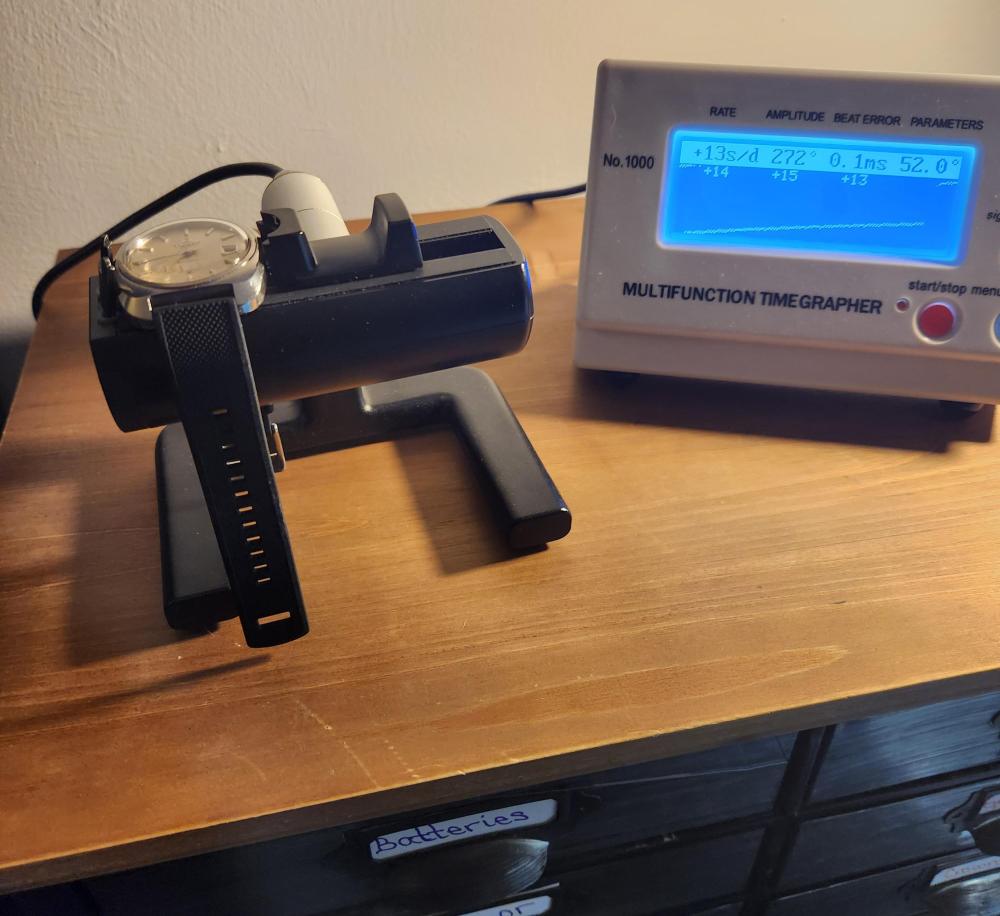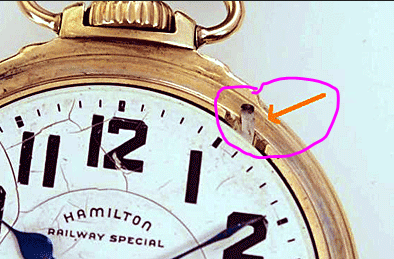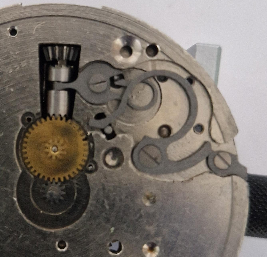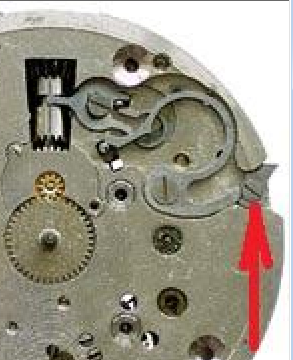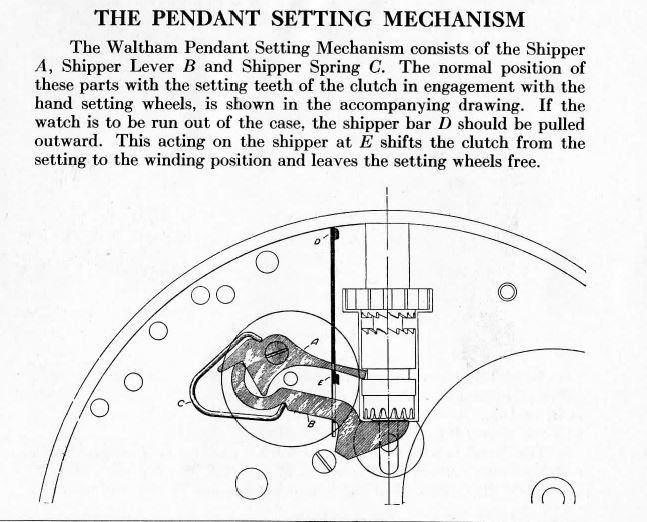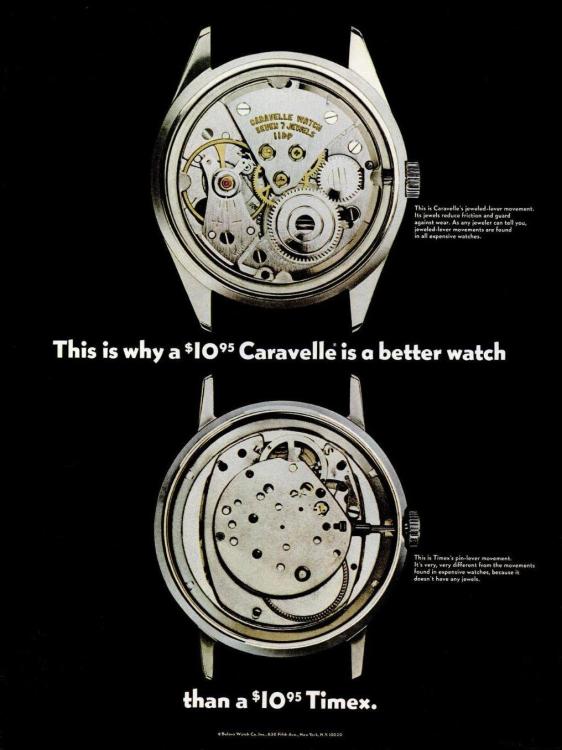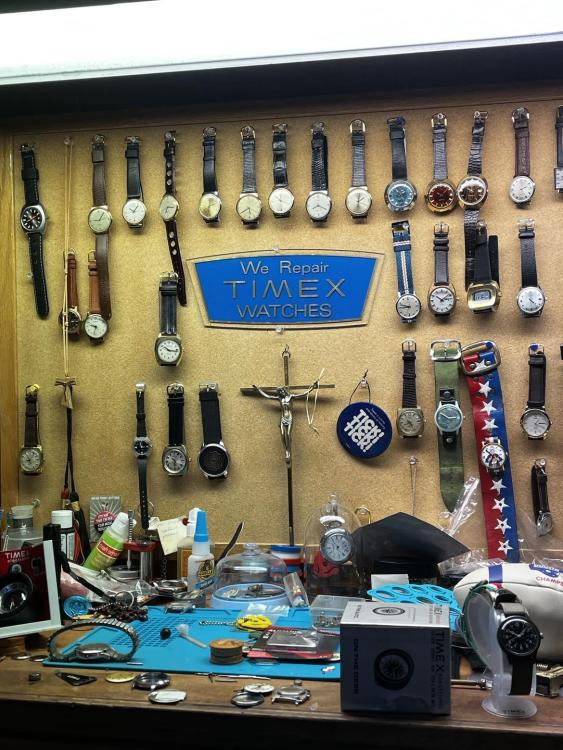Leaderboard
Popular Content
Showing content with the highest reputation on 11/08/23 in all areas
-
Hi like Jersey Mo I take the timex as another step on the evouloution of the watch industry, people like them and wear them and buy them, why. What is the basic function of a watch. To tell the time. And if the timex watches do that then that’s a success. The fact that they are still being made, worn and sold all over the world . So what’s with the snobbery regarding which is the best brand. You buy a watch it’s a personal choice. I have about 30 watches and as many clocks but I wear a Lorus Quartz, it tells me the time ,day date and it glows in the dark and it’s dependable. Timex are very much in the same vein practical. Would your Rolex, or any other Swiss watch still tick after an afternoon working with a Jack hammer breaking concrete ,probably not but a Timex would. In conclusion I respect JersyMo’s attachment and expertise he has built up through great patience and his knowledge of the brand. So let’s kick the SNOBBERY into touch we all have our own opinions some best kept to our selves. I would agree with the comments regarding they are not the best starter movement to work on as the construction differs from the many watches you will come across in the course of watch repair. But there are many cheap working watches to be had to practise on preferably pocket watches as the bits are larger and easier to handle. My 10 pence worth.7 points
-
yes, how can I continue now that the truth has come out that Timex is the evil empire of the watch industry! Oh wait just a minute. So when Rolex creates a product that sells for 35K ( those are the cheap ones too) and only can be afforded by a small percentage of the world population "that's not greed" ? I thought companies were in business to generate funds, create jobs, support economies and all that good stuff the politicians argue about? What am I missing here? I ain't missing nothing. In fact have a look at these NOS beauties I picked up a few weeks back. All from 1967.7 points
-
I think that should be permanently pasted alongside the forum header As beginners, I think we all fell in to the trap of thinking poor amplitude is mainly a result of the mainspring. Because we thing we've cleaned everything really well, and the gear train seems OK. When I started I changed the mainspring every time I serviced a watch. But, on reading advice from @nickelsilver, I changed my view, and now only buy a new spring if the old one is broken, or completely set. It's usually dirty/bent pivots/wheels, broken jewels etc. etc. (And often too much play at the top of the barrel arbor, allowing the barrel to rub). It's only after years of practice that you learn to spot all the little things that you miss as a beginner.3 points
-
We should set a WRT account on thingiverse where we can all upload our stuff. Here are all of mine https://www.thingiverse.com/scottliamuae/designs3 points
-
Even a completely set mainspring wound up tight not super tight but just wound up will still power watch at least for a little while adequately. Or basically I can do a lot of pre-timing with set mainsprings. Now we do get some or I have amusements with the Swiss watch industry. People who work at a Swatch group service center who have a infinite supply of spare parts will change anything just because they feel like it anything involving timing the escapement they just replace everything. Mainspring barrels they flow like water will change them just because. But Omega who has working instructions or basically supplemental information is working instruction 67 on how to recycle a mainspring barrel. In other words they explain how to take the mainspring barrel apart check all the components make sure everything looks perfect and seeing as how they even have a working instruction suggests that the majority of time it probably is perfect. Providing the watches get serviced a regular intervals. They go through all the checks put it all back together in a good to go with your used mainspring. Oh I'm thinking about the life of mainsprings here's something I used for a lecture once look at all the packages with lifetime mainsprings or they will not set or they basically will be perfect forever? Then yes if you look carefully there are the original steel Springs and they don't have any wording is of last forever permanence that sort of thing. But what I find interesting is perhaps in the watch still set but quite a few times I can purchase for American pocket watches original Elgin Hamilton etc. of mainsprings and out of the package there absolutely perfect have nice back curves for better power versus some of the modern white springs that are being made.2 points
-
After two years of working on mostly 1950s era movements, that has been my experience as well. Nine times out of ten I see the need to use my staking set to close the barrel arbor hole on the plate and see an immediate improvement in amplitude (assuming the other possible causes mentioned above are not present).2 points
-
It could be. But in my experience low amplitude is usually due to a number of other issues in the watch, and rarely because of the mainspring.2 points
-
I purchased £3.75 UV torch from ebay. Jewel 'ping'. Pick up UV torch, insert battery. Found red illuminated jewel within 15 seconds. Remove battery. Done this twice now. Would never have found them without. Well worth the purchase.2 points
-
Well, Here I am. Staking set complete. So, Let me tell you a story. Follow the Photographs. Sorry about the size. I bought a staking set for £13. Size 4mm diameter Used on an anvil and hand held to hammer. 14 month of saving and I Purchased a professional Anchor Staking set. £112. Stakes 5mm. 2 stumps for 3mm hole in anvil. Make a note - No convex holed stakes for working with hands. Base hole 4mm, too small for Anchor stakes. OK for cheap set. Made a base holder out of wood and plastic for protrudes through anvil. £1.39. Filed original cheap tips to 3 mm to depth of 8mm to allow insertion through anvil. Takes 1 hour to file each stake Anchor Stakes - no convex. Cheap set has convex. Top hole 5mm. Found a 4mm pipe, but 4.4mm external diameter. Insert 4mm stake. Make pipe larger with tape and make a stop. Best of all worlds. I have a semi professional system for the fraction of the price. Just love this hobby.2 points
-
I did a little research and it turns out that rubies fluoresce better at 365 nm UV, not sure how true this is, but there are generally two types if UV light sold 395 and 365. Maybe I was sucked into the hype, but I got the 365 and it makes jewels light up like little red LEDs. But I don't have the other type to compare so not a fair test.2 points
-
This proves what we all suspected. Watch repairers are scammers. They say it takes a day just to service a movement and requires investing in expensive tools, when in reality it takes a few minutes and can almost be done with just your bare fingers.2 points
-
This question was asked multiple times here … Reason is usually a faint 1st pulse of the tic noise that is missed by the TM now and then. The TM will fetch and print the next higher pulse (usually 3 in one tic noise). This can mean an escapement issue (e.g. too small drop lock) but most times just an audio issue, the TM has problems to recognize a quiet pulse #1. It is not a touching hairspring (random dots!). It is not knocking (which in real looks very different from the posted picture). Frank2 points
-
I wish people who want to talk about Timex would at least go over the service information, there is disassembly involved and you can build skills by working on these watches. I know I did, they were very helpful in helping me develop my ability to work with small parts, and to understand the inner workings of a watch. And if you work on a calendar movement, guess what? You get to have fun with springs! And did I mention unpinning and pinning hairsprings? I think they are perfectly appropriate for a beginner, they are robust enough that you can have early success instead of taking a perfectly good watch and turning it into a parts watch. At some point, yes, you do need to move on to something with jewels and bridges, but that doesn't have to be the first step. At one point when I was first learning I must of taken the train bridge off and put it back on 20 or more times on a Seiko movement, just to practice getting the pivots in place and handling screws etc. Cheers!2 points
-
Hello all. I have splashed out on some new oils and decided to buy the fluorescent ones. Any recommendations for a UV light?1 point
-
I've done a single one of those, and it was extremely challenging for me. So much so that I couldn't get myself to do another one. Those tiny, tiny cap jewel springs for the escape wheel and the 3rd wheel (if I remember correctly) must have been designed by a sadistic Japanese WWII veteran1 point
-
Fantastic post @mikepilk. So very, very true! And I must say, I am (and I believe we all are) extremely grateful for all the advice and knowledge @nickelsilver is sharing! I wouldn't have known half the stuff I now know without his posts and help1 point
-
It really would be nice if you gave us more information. Otherwise everybody gets to guess. Like exactly which watch did you service. What exactly did servicing consist of and can we see the timing machine results.1 point
-
Stiffer hair spring, shorter hair spring, lighter balance wheel, smaller balance wheel, moving the mass distribution of the balance wheel closer to is axis.1 point
-
You can easily add the Horotec label yourself. All my tools are either horotec or bergeon, at least thats what the label says.1 point
-
I spent the grand total of $4 on some cheap tools via Jaycar here in Australia. The little set consisted of a Jaxx type case opener, a pair of tweezers which surprisingly work a lot better than you would expect, a blue rubber blower and I'm positive there was something else, but I just can't remember what it was. Anyway, I bought it all for the blower which works fine. Can't go wrong for $4. Anyway as a project for myself, I drew up a holder for the opener and all the bits and then printed it in PLA on my 3d printer. If you look carefully, you can see the blower in the background. And please forgive the mess. Work in progress.1 point
-
1 point
-
I got this cheap effort a few months ago. It lights up the fluorescent oils really well. It picks out capstones as well. You can even get a good finger tan with it or any other small body part for that matter . https://www.ebay.co.uk/itm/254005595505?mkcid=16&mkevt=1&mkrid=711-127632-2357-0&ssspo=q3EwfL-5Rsi&sssrc=4429486&ssuid=tBiLZaCfRb2&var=&widget_ver=artemis&media=COPY Help the guy out, looks like hes got a cracked phone screen1 point
-
Good point nev, I found slow-mo video of the oscilator helpful to see intermittent sticking of hairspring. Running six hours fast is more likely to be a case of faster beater oscilator though. Rgds1 point
-
Have you demagnetized the whole movement and the tools you have been using? Make sure the hairspring is clean and the coils are not sticking to each other, is the hairspring free in the regulator and not rubbing on anything. Do you have the correct mainspring in its barrel. Try running the movement out of its case for 24 hours to see what happens.1 point
-
Yes, if He knows the exact calibre number. But then exists another oportunity - the train gears to have been changed from a donor wit slower BPH.1 point
-
1 point
-
Well, It may be hairspring sticky, ad it can stick and unstick in different moments, but then You will be able to put the watch on the timegrapher and see it goes too fast when hairspring sticked and OK when it is not. There is another, more probable situation. Do You know if the watch has worked before normally? The balance/ hairspring assembly may have been changed and with one from a movement from hte same familly but with different, faster BPH. Then, the timegrapher will autodetect the balance BPH and show good flat line, but the watch will work much faster. You can observe the second hand of the watch while it is on timegrapher and shows correct flat line with small timing error, and see if it makes full revolution for exactly one minute. Thus You will be able to understand what happens1 point
-
Just picked up this lot of 4 for nothing this past weekend. The bag had $5 on it and the guy just said you can have it! I also picked up another Gildcraft by Gruen for $5 that I will post another time. The seikos I need to order batteries. The Alita and Lathin both run. I am calling the Lathin Mr. Crabs. I think the case is pretty wild as is. The pelage on the case back really jumps in 3 d when swirled...1 point
-
Hi and welcome. Is it possible your minute hand is touching the hour hand and nudging it forward at some place on the dial before freeing itself then coming around again in an hour to push the hour hand a little farther? (guess from a fellow amateur)1 point
-
It spot welds a special electrode to the end of the broken screw and that can be used as a handle to unscrew the broken piece. But I think it wouldn't work on rusted and seized up screws.1 point
-
Looking more closely I think this might be a re-finished dial. It doesn't have the luster and the badges and hour markers are rough and not polished. The round badge has the painted symbol just a little off as well. Oh well I am pretty confident the movement is real as it has plenty of amplitude and beat error is low and the rate delta is also good...1 point
-
Thanks, The tool came today and I must admit I'm impressed with the quality for $115 US. I've already used it to move a jewel .13mm (center wheel too tight on an eta 2472). Worked as advertised. Thrilled not to have to purchase a donor movement. To your point, both pushers and anvils are 4mm. Jay (levine98)1 point
-
Once again were dealing with confusing terminology. Evolution of watch setting? At one time you had a key to turn the cannon pinion. Early watches that was on the front side later generation was on the backside evolution sometimes was on both sides. Then to get away from that they start to go to different systems lots of different systems. This is where you find things like the lever works nice for putting it in different modes like when it's in your unwinding of what's out your in setting. Makes it much easier to make the watch with the added bonus of keeping you from setting your railroad watch. So in the case of railroad grade watches pocket watches it is a requirement to have a lever for setting to keep you from accidentally setting the time Here's an image that I swiped off the Internet of what the lever on a lever setting watch would look like. So typically you would unscrew the bezel but not always you can have hunting cases where you push the button the lid opens up. But you'll typically see a little piece of metal that you use your fingernail to pull out the watch will go into setting. Then the evolution of winding and setting where the case holds the stem. Usually with the sleeve it holds the stem in either the winding or the setting position that is not controlled by the watch itself. Which becomes a major problem if there's a problem with the sleeve or is not adjusted correctly or they can be a big pain if things are right on your case. So this means that typically American pocket watches out of their case go into setting mode like this image that I swiped from up above. So you can see in this mode when the watches running it is driving the setting components sometimes it will do that quite nicely with no apparent problems and other times depending upon how much friction it will definitely cause writing issues of some form. Then another image that I swiped up above the watch in the service mode you'll notice it has shifted the keyless components back into winding. Sometimes when you flip the lever you do have to push something in to shift the components they may not actually moved by themselves initially. So now the watches in service mode or mode work and run out of the case. Then as I previously mentioned like the evolution of the keyless lots of different systems. For instance some Hamilton watches have a blue colored screw visible on the other side that you rotate to put it back in the winding. Or for instance here's an image of how Waltham Does it.1 point
-
@JustinMBased on Frank's advice I wonder if you can tune out this anomaly by adjusting the gain?1 point
-
That looks to be an additional noise as the 2 traces from the escapement are complete. Whereas on justin's the pattern is being pulled from entry jewel trace, like the oscillations are unequal at different points.1 point
-
Could be, but the amplitude is only 230° when it is happening which is why I didn't flag it as the prime suspect, and gravity seems to be influencing it, which is why I homed in on the balance system. However, you could well be right and this is certainly worth looking at as part of the troubleshooting process.1 point
-
Good point, I'd maybe search the same site for offerings with stems/crowns as it makes putting the keyless works back together a little easier. I also think you have a good point in switching up models, if you want to stick with Seiko, then maybe look at some of the following 7009, 6309 and 7S36/7S26 (the 7S26 and 7S36 are almost the same movement). Maybe get two of each type you select, then you can be sure to have spares just in case you ping-a-spring into that worm hole under your desk that leads to Darkest Peru. All of the models I mentioned are very common so will have lots of YouTube tutorials by different people so lots of different ways to skin that cat. However, I would recommend Mikes My Retro Watches YouTube channel, link here, as he is a Seiko Guru and shows his mistakes and how he gets out of them, and he is also pleasant to listen to. On the subject of pinging springs, get yourself a good magnet, I got some of the below from Amazon and stuck two of them onto a steel ruler and just waft it over the floor/desk/wife/cat.... to find springs, screws etc. saves hours on your hands and knees inventing new and creative combinations of swear words As an aside, I recently invested in a blacklight as the jewels in a watch (and all rubies I think) fluoresce under UV light like a red beacon making it much easier to find them after you tiddlywink them across the room with your oiler. Tried my best to avoid a spat over Timex, but I feel like the kid in the crowd looking at the emperor with no clothes. The poster below sums it all up. Timex were making cheap and nasty movements that were designed to be essentially disposable (sorry, but dunking the entire movement in lighter fluid does not constitute a service, just a poor attempt to fake a 'me too', product) ....... this would be forgivable IF they were charging cheap disposable movement prices to their customers, but charging the same for their movements as a comparable Swiss or Japanese movement is just dishonest and exploitative. I can genuinely see the attraction and challenge of servicing a Timex movement because you are trying to do something out of the ordinary and test your skills, but this is not justification for a company cutting every corner in their designs just so they can maximize their profit by exploiting the naivety of their customers who are paying way over the odds for disposable junk, when, instead, they could invest their money in a quality movement that would last. This is why I cannot bring myself to recommend Timex in any way shape or form, yes they showed tremendous innovation in their designs, but the innovation was unethical by being motivated to maximize profit at the expense of their customers, not making better watches.1 point
-
Rivets? That is a myth perpetuated by those who want to knock Timex because they are not serviceable in the same manor as a typical swiss mechanical. I do agree they are not the best choice to learn on since the techniques learned will not transfer to other repairs. yes they are remarkable devices. Just a small sample here. you may not realize but the screws on the other side of the movement for those models M24 and well up to M109. The M21, M22, M26, M29 were on the back side. Done were riveted together preventing the plates from being separated.1 point
-
1 point
-
Looks like a 6001, see link here I just acquired a 6001 in a batch of watches - are you looking to refurbish it? As this has sentimental value I would advise you leave it on a shelf for now until you get a few wins under your belt with watches you aren't worried about junking. As your grandfather gifted this to you and your chances of junking it is high (given you are just starting out on your journey) I would wait until you are confident there will be no tears. Please accept this advice as well intended, I'm just trying to save you some heartache not wag my finger at you and insinuate that you can't handle it. Nobody is born a watchmaker and it took me over 20 wathces (and tears) until I finally started winning more than I was loosing - and I still have the occasional train wreck! If you want, and you are ready, I can wait and work on my 6001 at the same time you are working on yours - two heads are better than one!1 point
-
Farewell my fellow time piece brothers. Wishing nothing but Peace and Happiness to all!0 points




.thumb.jpg.85ffb614e22e1624ce832b1513d723df.jpg)

